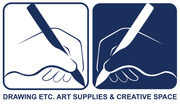GAMBLIN ARTIST GRADE OIL COLOURS 37ML (YELLOWS) [Restocked: 3/3/24]
Couldn't load pickup availability
The color yellow appears to advance. It has the highest reflectivity of any color.
Today hearing “yellow” many painters will think of Cadmium Yellow – brilliant and opaque. Cadmium Yellow replaced toxic chrome (lead) yellows. Although more expensive than Chrome Yellow, Cadmium Yellow was used by landscape painters, including Claude Monet, because of its higher chroma and its greater purity of color.
Painters today can choose from among the cadmium yellows of the impressionists as well as the modern and more transparent hansa yellows. Hansa yellows retain their intensity in tints and make beautiful glazes. Hansa Yellows can boost cadmiums in mixes; enabling brighter secondaries. Indian Yellow has been prized for hundreds of years and is ideally suited for glazing. In its transparency, it makes a glowing warm yellow—as if a painting were suddenly lit with summer sunshine.
Before the Industrial Revolution, painters used Yellow Ochres or Orpiment (sulfide of arsenic). Occasionally painters found some Gamboge, a strongly colored secretion from trees that resembles amber. Gamboge was used for glazing before Indian Yellow became available in the middle of the 19th century. To make Indian Yellow, cows were force fed mango leaves and given no water. Their urine was collected in dirt balls and sold as “pigment.” The resulting artists’ color was a warm transparent glazing yellow. But Indian Yellow was lost somewhere between the decline of cruelty to animals and the rise of manufactured pigments.
In the 20th century, the most transparent of the yellows that we at Gamblin call “Indian Yellow” is a light stable diarylide pigment. In its transparency, it makes a glowing warm yellow—as if a painting were suddenly lit with summer sunshine.
A color with obscure origins, Naples Yellow was originally lead antimoniate. Assyrian artists used this pigment to make ceramic glaze. Contemporary history of this color begins in the 18th century but “Naples Yellow” means more a color than a chemical composition. Rubens used this color extensively for skin tones. Because the original pigment is lead based, Robert Gamblin formulated an excellent copy at a reasonable price.
Hansa yellow pigments were first made in Germany just before World War I. They are organic pigments that are semi-transparent and lightfast (Hansa Yellow Light is Lightfastness II, and Hansa Yellow Medium & Deep are Lightfastness I). In their masstones, Hansa Yellows resemble Cadmium Yellows but the similarity ends there. Hansa Yellows make more intense tints and cleaner secondaries, especially when mixed with other organic (modern) colors like Phthalo Blue and Green. Because they are more transparent, Hansa Yellows have great value as glazing colors. Painters can also take advantage of the “temperature” shifts of the Hansas –- from coolest yellow (Hansa Yellow Light) to warm golden yellow (Hansa Yellow Deep).
Tint = Color + Titanium Zinc White
Tone = Color + Portland Grey Medium
Shade = Color + Chromatic Black
Glaze = Color + Galkyd Medium
Available in store: 37ml
*Images and description taken from Gamblin Colours
[Restock Note]
Next restock estimates: TBC
In order to ensure the highest level of customer satisfaction, we are committed to continuously refreshing our inventory by regularly sourcing new shipments directly from the manufacturer.
Please check back if your items are OOS, or email us at hello@drawingetc.com for custom orders or restock notice.


































































